Peridot is a clear olive-green gemstone valued for its brilliant color and durability. The gem is said to heal the heart, lend strength, and help dreams come true.
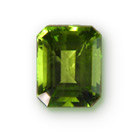 Peridot is the perfect summer stone, a gemstone colored with the green of nature and the golden hues of the sun. First popular nearly 4,000 years ago in ancient Egypt, the brilliant peridot has made a stunning comeback in recent years and is considered the gemstone of the month of August and of the astrology sign Libra. Peridot is often mistaken for emerald and other green gems, but it has a beauty all its own.
Peridot is the perfect summer stone, a gemstone colored with the green of nature and the golden hues of the sun. First popular nearly 4,000 years ago in ancient Egypt, the brilliant peridot has made a stunning comeback in recent years and is considered the gemstone of the month of August and of the astrology sign Libra. Peridot is often mistaken for emerald and other green gems, but it has a beauty all its own.
Green Peridot
Peridot is gemstone-quality olivine, a mineral that is very abundant but not usually found in high enough quality to be used as gemstones. The name peridot was derived from either the Greek “peridona,” (richness) or the Arabic “faridat” (gem). Peridot is also known as chrysolite, Greek for “goldstone.”
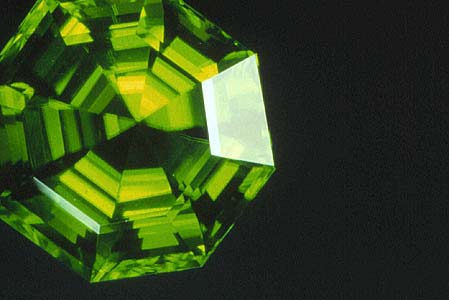
The most valuable peridots are those with the richest green color, lending to gold – coloring that is caused by the traces amounts of iron that color the gemstone. Peridot is not very hard, ranking 6.5 to 7 on the Mohs scale, but it is easy to care for when properly cut and is very durable.
Peridot in Myth and History
When Hawaiian natives first discovered peridot in the black sands of volcanoes, they believed the clear, green gemstones were the tears of the volcano goddess, Pele. Egyptian jewelry featured peridot, “the gem of the sun,” as early as two centuries B.C., believing it connected them to their goddess, Isis. Peridots are said to have been a favorite gemstone of Egypt’s most famous queen, Cleopatra.
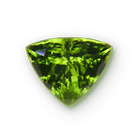 The Romans admired the stone for its constant color which does not change in artificial light, calling it “emerald of the evening.” Peridot is found in Medieval Christian churches and shrines and was also popular during Europe’s baroque period of the 17th Century.
The Romans admired the stone for its constant color which does not change in artificial light, calling it “emerald of the evening.” Peridot is found in Medieval Christian churches and shrines and was also popular during Europe’s baroque period of the 17th Century.
When a new source of peridot was discovered in Pakistan in 1994, finer than any samples that had been found before, the gemstone was popularized for modern use. These Pakistani stones have been called “Kashmir peridots,” linking them in name with the famed Kashmir sapphires that are so highly prized.
Magical Significance and Powers of the Peridot
Like most gemstones, peridot has been attributed with a long list of healing and magical powers. Peridot is said to:
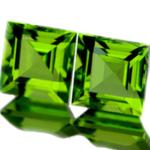 protect from negativity and nightmares
protect from negativity and nightmares- aid with stress reduction and relaxation, acting as a tonic for the whole body
- clean and heal the heart
- boost medicine’s potency
- be linked with nature
- enhance persuasiveness, fame, and vitality
- help dreams and ambitions to come true
- aid in finding strength and encouraging future growth
Peridot is commonly considered the birthstone for the month of August, the gem corresponding to the astrology sign Libra, and the gemstone for the 16th wedding anniversary.
Peridot Gemstones in Jewelry
Until the discovery of new sources in the mountains of Pakistan in 1994, peridot had hardly been seen since the artwork of the 17th century. Today, however, peridot is found in Brazil, Norway, the Congo, Australia, Myanmar (Burma), Mexico, China, South Africa, Sri Lanka, Saudi Arabia, and the US. Peridot has also been found in crashed meteorites.
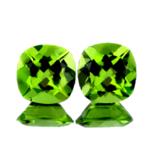 Peridot is striking when set in pendants, earrings, bracelets, and rings. The popularity of this gemstone is on the rise, as is its availability and the creative uses to which jewelers are beginning to put the stone.
Peridot is striking when set in pendants, earrings, bracelets, and rings. The popularity of this gemstone is on the rise, as is its availability and the creative uses to which jewelers are beginning to put the stone.
Reference
- About Birthstones, “August Birthstone,” About-birthstones.com, 2008.
- Bernardine Fine Art Jewelry, “August Birthstone – Peridot,” Bernardine.com, 2009.
- International Colored Gemstone Association, “Peridot,” Gemstone.org, 2009.
